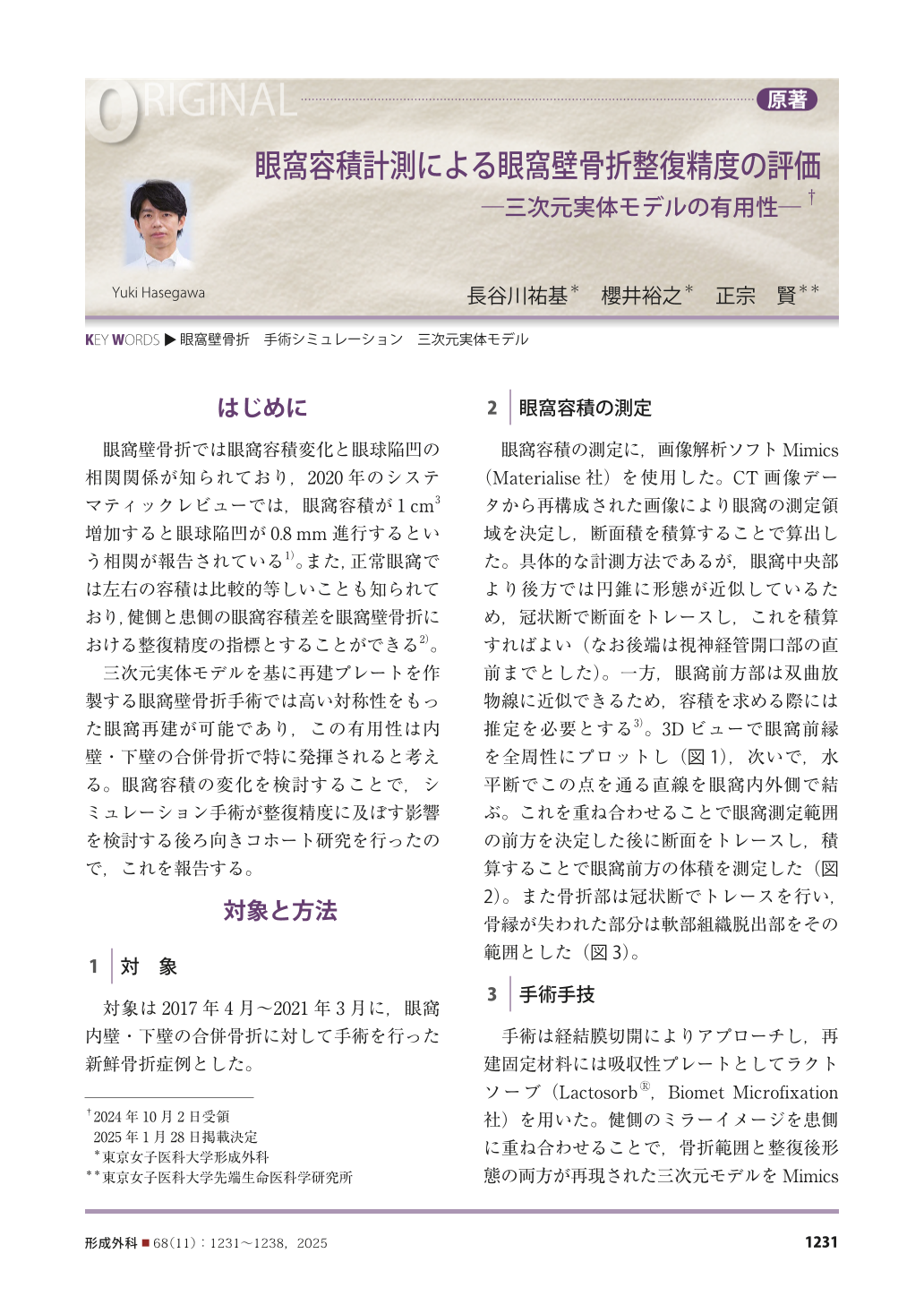Japanese
English
- 有料閲覧
- Abstract 文献概要
- 1ページ目 Look Inside
はじめに
眼窩壁骨折では眼窩容積変化と眼球陥凹の相関関係が知られており,2020年のシステマティックレビューでは,眼窩容積が1 cm 3増加すると眼球陥凹が0.8 mm進行するという相関が報告されている 1)。また,正常眼窩では左右の容積は比較的等しいことも知られており,健側と患側の眼窩容積差を眼窩壁骨折における整復精度の指標とすることができる 2)。
三次元実体モデルを基に再建プレートを作製する眼窩壁骨折手術では高い対称性をもった眼窩再建が可能であり,この有用性は内壁・下壁の合併骨折で特に発揮されると考える。眼窩容積の変化を検討することで,シミュレーション手術が整復精度に及ぼす影響を検討する後ろ向きコホート研究を行ったので,これを報告する。
Objectives: To evaluate the accuracy of orbital-wall fracture reduction by measuring the orbital volume, and to assess the utility of a three-dimensional (3D) model in improving surgical outcomes.
Patients and Methods: We conducted a retrospective analysis of the cases of ten patients with orbital-wall fractures who underwent surgical reduction that used a 3D-printed model. The orbital volumes were measured pre- and post-operatively with the use of CT images, and we assessed the accuracy of the orbital-wall restoration by comparing the reconstructed orbital volume with the contralateral healthy side. The differences in volume were analyzed to determine the precision of the surgical reduction.
Results: The average difference in the post-restoration orbital volume was significantly smaller in the cases in which a 3D model was used (n=ten) compared to the cases without the use of such a model (n-6). The use of a patient-specific 3D model improved the accuracy of orbital-wall reconstruction and reduced the rate of post-operative complications such as enophthalmos and diplopia.
Conclusion: The incorporation of 3D models in surgical planning and execution significantly enhances the accuracy of orbital-wall fracture reduction and minimizes the risk of post-operative complications. Further research is needed to evaluate the long-term stability of these results.

Copyright© 2025 KOKUSEIDO CO., LTD. All Rights Reserved.


